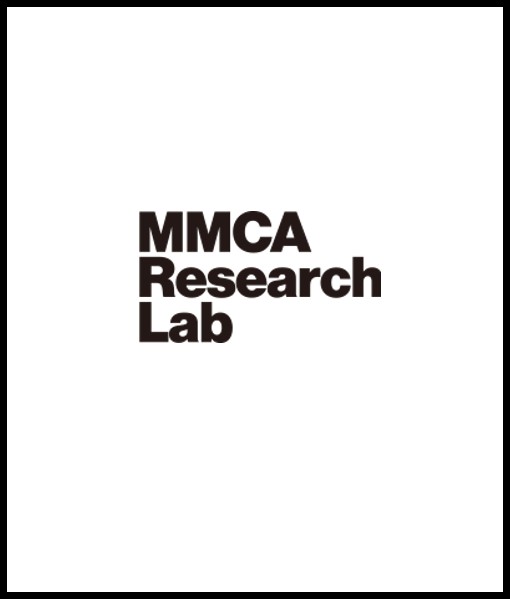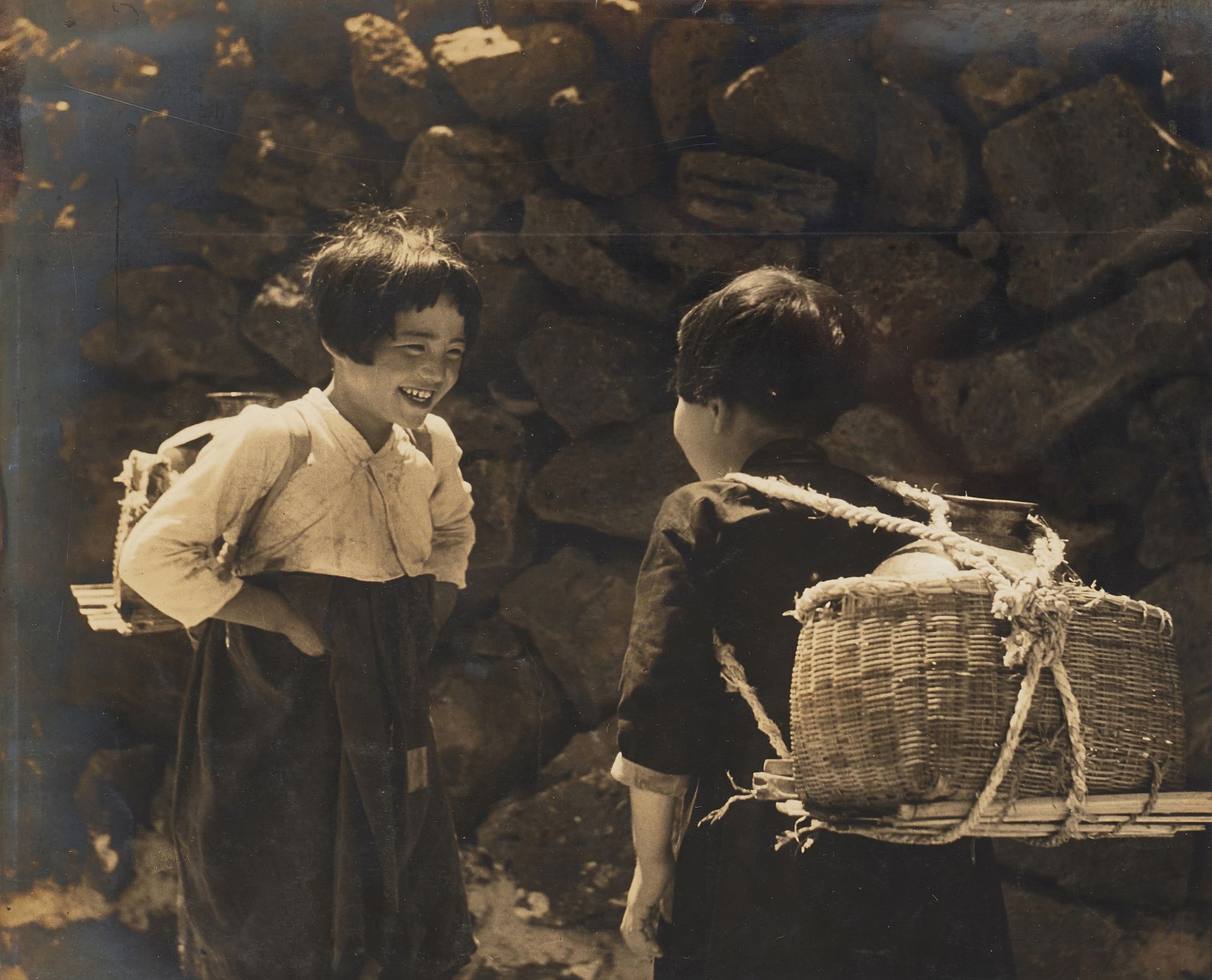
Limb Eungsik, Portrait of Hyun Ilyeong, 1970, Gelatin silver print on paper, 33.2×25.8cm. MMCA collection
Hyun Ilyeong
* Source: MMCA
Related
-

Portrait Photography Research Society of Seoul
Portrait Photography Research Society of Seoul [Seoul insang sajin yeonguhoe; PPRSS] is an organization of photographers founded in October 1946 in Seoul. Hyun Ilyeong served as its president, and other members include Lim Sukje, Han Sanghui, Kim Jinhae, Lee Changgyu, Kim Gwangbae, and Park Pilho. As the poor domestic supply of photographic materials led to great difficulty in photography production, the Korean Photography Formation Committee [Joseon sajin gyeolseong wiwonhoe, KPC], an organization that included reporters, salespeople, amateurs photographers, and material dealers, was established in September 1945 with the photographer Park Pilho as the chairman. After the establishment of the KPC, photographers in various fields founded an organization to rebuild and develop Korean photography. The Portrait Photography Research Society of Seoul was founded modeled after the Portrait Photography Research Society of Gyeongseong [Gyeongseong insang sajin yeonguhoe], a group of commercial photographers who operated photo studios before Korea’s liberation from Japan. The members of the PPRSS were also involved in the Joseon Art Photography Association [Joseon sajin yesul yeonguhoe] and the Korean Photography Alliance [Joseon sajin dongmaeng]. After Korea’s liberation from Japan, they sought not only to disseminate photographic materials and revitalize commercial photography, but also to explore channels and directions for photography in various fields.
-

Contemporary photography
Contemporary photography differs from a modernist approach to photography that highlighted the technical qualities of the image. Robert Frank’s photograph collection The American published in 1959, is considered a turning point in indicating a new style based on idiosyncratically cropped images and unusual focus. Contemporary photography became prevalent when conceptual art emerged between the 1960s and the 1970s. The New Wave of the Photography exhibition, which opened at the Walker Hill Art Center in Seoul on May 18th, 1988, is considered as marking the starting point of Korean contemporary photography. The Horizon of Korean Photography exhibition at the Total Museum of Contemporary Art in Jangheung, Gyeonggi-do in November 1991 provided a further turning point. The founding of galleries specializing in photography, including the Timespace, Pine Hill Gallery, and Hanmadang Gallery, has also contributed greatly to the popularity of contemporary photography in Korea. Over the last 30 years, many foreign-educated photographers like Koo Bohnchang, Kim Daesoo, Lee Juyong, Lim Youngkyun, Han Okran, and Choi Kwangho have returned to Korea and released works reflecting new trends in the medium and further enhancing its national status as a contemporary art form.
-

Lee Hyungrok
Lee Hyungrok(1917-2011) is a renowned artist in the history of modern and contemporary Korean photography. Born in Gangneung, Gangwon-do Province, Lee graduated from Gangneung Agricultural High School. After graduation, he learned photography at a photo studio (which also served as a shop selling hardware related to photography) in Gangneung run by his eldest brother Lee Sangrok. In the mid-1930s, he joined the Gangneung Sauhoe, a photography club, and began to fully engage in photography. The Gangneung Sauhoe is an amateur photographer group organized by Limb Eungsik, a photographer who moved from Busan to Gangneung at the time. In 1937, Lee along with Lim and ten other members of the Gangneung Sauhoe prepared about fifty photographs and held the inaugural exhibition of the Gangneung Sauhoe. From 1937 onward, he repeatedly won honorable mentions at the Joseon Photography Exhibition [Joseon sajin jeollamhoe], a contest hosted by the Joseon Federation of Photography [Jeon joseon sajin yeonmaeng], establishing himself as an amateur photographer. After Korea’s liberation from Japan and the Korean War, he departed from the trend of salon or painterly photography and advocated for realistic photography that highlighted snapshots, recordability, and a documentary approach. Particularly in the 1950s and 1960s, Lee captured fatigued lives of ordinary people in the city and its outskirts in warm black-and-white language by photographing shoemakers, fishermen, street vendors, and children on the streets. He contributed to the development of Korean photography culture by advancing realist photography and exploring new modes of expression for modern photography, while forming photography groups and training the younger generation after Korea’s liberation. In particular, he played a leading role in the founding and activities of photography organizations in the 1950s and 1960s, including Sinseonhoe (established in 1956), Salon Ars (established in 1959), and the Modern Photography Society [Hyeondae sajin yeonguhoe] (established in 1960).
Find More
-

Lim Sukje
Lim Sukje (1918–1994) was an important modern and contemporary Korean photographer. He joined the Korean Photography Alliance [Joseon sajin dongmaeng], which was founded on June 13 in 1947 in Jongno, Seoul. As a member of the first squad of the cultural operation unit of the Korea Federation of Cultural Organizations [Joseon munhwa danche chongyeonmaeng], a representative left-wing organization, Lim led activities to build a new culture in the newly liberated environment. Together with other members of the Korean Photography Alliance, he participated in a traveling exhibition of the cultural operation unit hosted by the Busan Sinmun newspaper company in June 1947 by submitting press photos of the U.S.–Soviet Joint Committee, documentary photos of the Namsan Mayday event, and photos of left-wing leaders. By doing so, he widely disseminated historical records of the time to the public. From August 7 to 14 in 1948, he held The First Solo Exhibition of Art Photography by Lim Sukje at Dong Hwa Gallery. According to the photographer Hyun Ilyeong, Lim Sukje Art Photography Solo Exhibition is significant as “the first solo photography exhibition held after Korea’s liberation from Japan by overcoming the extreme shortage of photographic materials.” Given that Lee Taeung, a chairman of the Korean Photography Alliance, wrote a recommendation and that other alliance members presented their works in support of him, Lim’s solo exhibition shows the last activity of the alliance members before they were removed from the organization’s roster. The photos displayed in Lim’s solo exhibition featured men engaging in manual labor, including a laborer carrying imported food at the Incheon wharf, another in a workplace, and a tenant farmer. Accordingly, his photography was considered to break away from traditional painterly and romantic styles, pursuing instead stark and hard-edged realism. In 1952, Lim served as president of the Korean Photographic Art Research Association [Daehan sajin yesul yeonguhoe]. He continued to develop his creative oeuvre by holding nine solo exhibitions until 1962.
-

Choi Kyebok
Choi Kyebok (1909-2002) was a major figure in the history of modern and contemporary Korean photography who played an important role in the development of art photography in the modern era and in the production of photographs for promoting the country after Korea’s liberation from Japan. He was born at 102, Jongno 1-ga, Daegu, Gyeongsangbuk-do Province (currently 19, Dongmun-dong, Jung-gu, Daegu). He went to Kyoto in Japan around 1925, entered the Einō Camera Shop in Teramachi, Shimogyo-ku as an apprentice and learned photography. In 1933, he returned to Korea and opened his own store Choi Kyebok Camera Shop to sell photography equipment at Jongno 1-ga in Daegu. In the following year, he formed a photographers’ club named Daegu Amateur Sauhoe and led the local photography culture. In the 1930s and 1940s, Choi developed his own distinctive oeuvre by submitting his major works to the Joseon Photography Exhibition [Joseon sajin jeollamhoe], a photo contest hosted by Joseon Federation of Photography [Jeon joseon sajin yeonmaeng], and the Prize Competition for Photos of Enjoying the Cool Air, a photo contest organized by the Chosun Ilbo newspaper, and by winning prizes. Submitted works include Spring in Yeongseon Pond, Spring Wind, Sand Hill, Summer Suburbs, and Summer Hilltop. In 1942, he participated in the Joseon Mountaineering Club’s ascent of Baekdusan Mountain as a documentary photographer and photographed the scenery of Baekdusan Mountain and its lake. In and after 1945, he led the founding of photography organizations, such as Geonguk Photography Culture Federation [Geonguk sajin munhwa yeonmaeng], Daegu Photography Association [Daegu sayeonhoe], and Daegu Photographers Club [Daegu sauhoe]. In 1947, he was dispatched as a part-time reporter of Daegu Sibo newspaper to Ulleungdo and Dokdo Islands for the academic research mission organized by the Joseon Mountaineering Club and sponsored by the Ministry of Education. There, he took documentary photographs. When the Korean War broke out, he served as a military photographer in the press division of the Information and Education Bureau of the Ministry of National Defense. Choi Kyebok made efforts to educate students on photography by establishing the Korean Photographic Art Academy, the first photography institution in Daegu, in 1952. When the Korean Photographers Group was founded in 1957, he became its first president. He was commissioned by the government and public organizations to photograph national publicity materials and cultural heritage items. Choi’s oeuvre encompasses a wide variety of subjects ranging from modern art photography to mountain photography, academic research photography, and photographs of historical ruins and cultural heritage. It shows not only the formation and development of Korean photography circles, but also photography’s social role in the nation's formative period.






